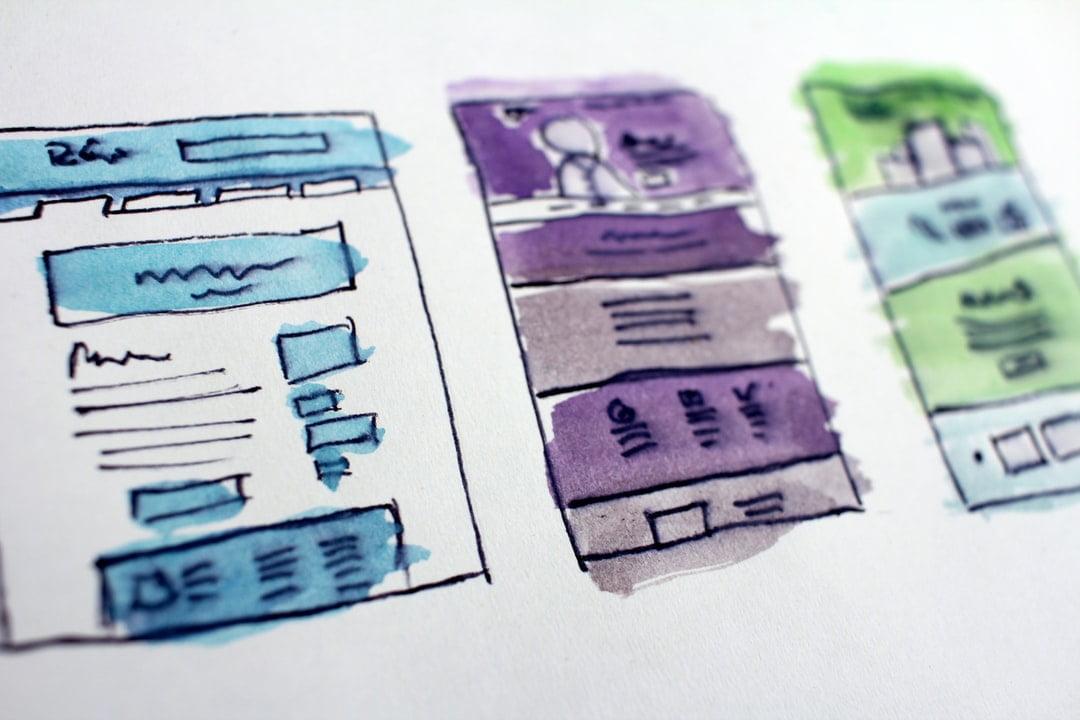What is humane design?
Humane design is a new standard for user-centered design. It takes into account the user's emotional and physical needs when designing products, services, and experiences. This approach puts the user first, making sure that their needs are met in a way that is both efficient and effective.
Humane design has its roots in human-centered design, which has been practiced for decades by designers across different disciplines. But what sets humane design apart is its focus on empathy and compassion as essential components of the design process. With this new perspective, designers can create solutions that not only meet users' needs but also address their emotional needs.
One of the key principles of humane design is to always start with why. That is, designers should ask themselves why they are designing something before starting to work on it. By understanding the purpose of their work, they can make sure that everything they do meets that goal. And by putting themselves in the users' shoes, they can make sure that the end result will be something that users will love.
Humane design is a relatively new field that focuses on making products, services, and spaces more user-friendly and comfortable for people. The goal is to reduce stress and anxiety, and make everyday life easier. This can be done through things like ergonomic design, natural lighting, and color schemes that create a calm environment. In the workplace, humane design principles are often used to create a more productive and enjoyable space for employees.

There is no one answer to this question as the definition of humane design can vary depending on whom you ask. However, some common principles that are often cited when discussing humane design include taking into account the user’s needs and preferences, making sure the product or service is accessible and easy to use, and paying attention to detail in order to create a quality experience.
Humane design generally strives to make people’s lives easier and more enjoyable, whether that means designing a user-friendly interface for a new website or developing a more comfortable chair for an office. When done well, it can greatly improve people’s everyday experiences and make the world around us a better place.

Humane design is a design philosophy that puts people first. It starts with the belief that technology should be empowering, not overwhelming. Traditional user-centered design focuses on making products easy to use. Humane Design goes a step further by making products useful and desirable, so people can achieve their goals effortlessly.
Humane design has 4 core principles: focus, feedback, tolerance, and empathy. Focus principle states that technology should help us focus on what’s important instead of distracting us from it. Feedback principle believes that technology should give us timely and relevant information about our actions, so we can make adjustments accordingly. Tolerance principle posits that technology should be flexible and forgiving, allowing us to make mistakes without major consequences. Empathy principle argues that in order for technology to be truly humane, it must meet the needs of all users, not just those who are technologically savvy.
When these principles are applied to product design, the result is an intuitive experience that feels natural and effortless. Technology fades into the background so people can focus on what's important to them.
Humane design is necessary because it recognizes the inherent value of every person. It sees people as whole beings with dignity and rights, not as expendable commodities. It treats workers with respect and fairness, not like objects to be used and discarded. And it understands that the environment is a shared home that we all depend on for our survival, not a dumping ground for toxic waste.
In short, humane design is necessary because it is based on principles of justice and care. These are the principles that we must use to build a world that is safe for all of us—a world in which everyone can thrive.

There is no definitive answer to this question as it depends on the interpretation of "humane design", and what elements are considered most important for creating user-friendly products. However, some key considerations for humane design include making products accessible and easy to use for all users, minimizing user error, reducing frustration, and providing a pleasant user experience. By taking these factors into account when designing products, it is possible to create more user-friendly items that are still enjoyable and satisfying to use.
In order to create products that are both appealing and functional, designers must consider the entire user experience. This means taking into account not only how a product looks, but also how it feels and functions. Products that use humane design principles take into account the user's needs and preferences in order to create something that is not only aesthetically pleasing, but also easy and enjoyable to use.
One example of a company that uses humane design principles is Apple. Their products are known for being both beautiful and easy to use. Another example is Tesla, whose cars are designed with the user's comfort and safety in mind. These are just two examples of many companies who understands that good design isn't just about how something looks, but about how it works for the person using it.
Humane design is a type of design that emphasizes the user’s experience and wellbeing. It takes into account how people interact with technology and how it can impact their lives. Humane design is not just about making products look good, but also about making them easy and enjoyable to use. The benefits of humane design are twofold: businesses can reap the rewards of increased sales and satisfaction, while users can enjoy a better experience with the products they use every day.
The concept of humane design has been around for awhile, but it has gained new importance in recent years as we have become increasingly reliant on technology. In our fast-paced, always-on world, it is more important than ever to create products that are both aesthetically pleasing and user-friendly. With so many options available, businesses need to find ways to stand out from the crowd and give users what they want: a positive experience that leaves them wanting more.
Humane design is one way to do this. By taking into account the user’s needs and wants, businesses can create products that are not only functional but also attractive and easy to use. This type of design takes into consideration all aspects of the user experience, from first impressions to long-term satisfaction. In other words, it is design that puts the user first.
There are many benefits to humane design, both for businesses and users. For businesses, humane design can lead to increased sales and satisfaction from customers. And for users, it can mean a better experience with the products they use every day.

There's no one answer to creating a more humane design culture within businesses, but there are a few key ways that businesses can encourage this type of thinking and behaviour. One way is to design with empathy, which means considering the needs of all users when designing products or services. This includes taking into account factors such as age, ability, gender, race, culture, and income level. Another way to create a more humane design culture is to focus on user experience and making sure that the products or services offer a positive and enjoyable experience for users. This can be done through user research, testing, and feedback. Lastly, it's important to think about the wider societal impact of designs and how they can be used to make positive change in the world. When businesses take these steps to create a more humane design culture, they are not only making their products or services better for users but also contributing to making the world a better place.
There are a few common mistakes that businesses make when trying to implement humane design. The first is not taking into account the needs of all users. This can often lead to designs that only consider the needs of the able-bodied and ignore those with disabilities. It's important to remember that everyone has different needs and requirements, so designing for just one group of people is not humane design.
Another mistake is failing to consider how user interface choices can impact users emotionally. For example, using intrusive pop-ups or aggressive marketing techniques can be very off-putting for users and cause them to have a negative emotional reaction to your brand. This kind of design does not take into account the user's feelings and experiences, which is necessary for humane design.
Lastly, many businesses make the mistake of thinking that humane design is only about making things look pretty or streamlined. However, appearance is only a small part of it; much more important are things like how easy it is to use your product, whether it causes any unnecessary stress or anxiety, etc. Simply put, if your design isn't actually helping users in some way, it's not humane - no matter how good it looks on the surface.
Humane design is a term that is used to describe the process of designing products and services that address the needs of all users, including those with special needs or who may be marginalized. The goal of humane design is to create products and services that are inclusive and accessible to everyone. When designing for empathy, designers consider the user’s emotional state and try to understand how their product or service can make a difference in their life. Inclusive design takes into account the user’s physical, cognitive, and social abilities when designing products and services. By taking an empathetic approach to design, we can create products that are more inclusive and accessible for all users.

There is no one answer to the question of what the future of humane design holds, as it depends on the ever-changing landscape of technology and the needs of users. However, some experts believe that humane design will increasingly focus on creating technologies that are seamlessly integrated into our everyday lives, personalized to our individual preferences, and allow us to interact with them in a more natural way. With the rapid advancement of artificial intelligence and other forms of advanced technology, it is likely that humane design will need to take these capabilities into account in order to create truly user-friendly products and experiences. As we move towards a future where technology plays an even more integral role in our lives, it is crucial that designers consider the human element in all aspects of their work.
Humane design is a term that has been used in recent years to describe a type of design that takes into account the needs of people and animals. The term can be applied to products, environments, or experiences. The goal of humane design is to create something that is safe, comfortable, and user-friendly for both people and animals.
There are a number of factors to consider when designing something with humane principles in mind. For example, you need to think about how the product will be used by people and animals, what materials it will be made from, and whether there are any potential hazards involved. You also need to consider the welfare of the people and animals who will be using the product or participating in the experience.
There are many different ways to achieve humane design principles. One way is to use natural materials that are safe for both people and animals. Another way is to create products that are easy to use and comfortable for both people and animals. You can also create products that have multiple functions so that they can be used by both people and animals.
The most important thing when designing anything with humane principles in mind is to think about the needs of both people and animals involved. By taking into consideration the needs of both groups, you can create a product, environment, or experience that is safe, comfortable, and user-friendly for all.
How can we create a more humane world? We can start by looking at the way we design our products and services. All too often, we put profit ahead of people, and the result is sub-standard products and services that don't meet our needs or provide us with the level of quality and care that we deserve. When we put people first, however, we can create products and services that are truly designed for human beings. By considering our needs for pleasure, connection, autonomy, and meaning in everything we do, we can create a world that is far more humane than the one we currently live in.

Humane design is a term that is used to describe the process of designing products, services, or environments that take into account the wellbeing of people. The goal of humane design is to create solutions that are not only effective and efficient, but also safe, comfortable, and user-friendly. There are many factors to consider when incorporating humane design principles into a project, but some common elements include ergonomics, human psychology, and environmental sustainability.
While humane design has been gaining traction in recent years as more companies seek to create user-centric solutions, there is still much work to be done in order to make sure it is more widely adopted. One way we can help promote humane design is by raising awareness about its importance and benefits. We can also encourage businesses and organizations to place greater emphasis on the user experience when designing new products or services. Additionally, supporting research and development in this area will help ensure that humane design principles are continually being improved upon. Ultimately, by working together we can help make the world a better place for everyone through humane design.
Humane design is a term that is used to describe a design approach that puts humans first. It takes into account the user's needs and strives to make the user experience as positive as possible. When designing products or services, it is important to keep the user in mind and consider their needs. Designers should aim to create products that are easy to use and understand, and that meet the user's needs.
One of the key principles of humane design is simplicity. This principle states that designs should be simple and easy to understand. They should not be overly complex or confusing. instead, they should be intuitive and straightforward. Another key principle is safety. This means that designs should be safe for users to interact with. They should not pose any risks or dangers to the user's health or wellbeing.
When incorporating humane design principles into your work, it is important to keep the user in mind at all times. Consider their needs and how you can make their experience using your product or service as positive as possible. Remember to keep things simple and safe, and you will be on your way to creating a truly humane design.
When it comes to user-centered design, the new standard is humane design. This approach takes into account the user's emotional and physical needs, as well as their cognitive ones. It results in products that are not only easy and enjoyable to use, but also good for our mental and physical health.